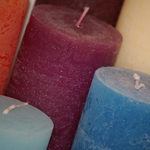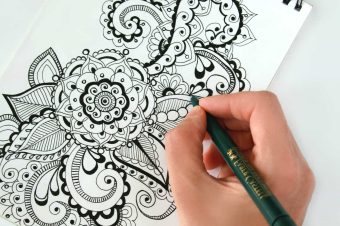All Types of Eggs are used for Egg Art
Story by Penny Swift
Egg art cannot be defined in one particular way; there are many different arts and crafts that are used to create various different products, all utilizing some sort of egg.
Egg Types used for Egg Art
Eggs are symbolic, so it’s probably not surprising to find that a wide variety of eggs are used as a medium by artists and crafters all over the world. The most popular eggs that are used include common chicken eggs, duck eggs, little quail eggs, and ultra-strong, larger-than-life ostrich eggs. Sometimes other materials are used, but the common factor is the shape.


>Pictures above: A chicken egg and an ostrich egg.
Origins of Egg Art
The undisputed father of egg art is undoubtedly the legendary Peter Carl Fabergé, a Russian goldsmith who was appointed by Tsar Alexander III to make Imperial Easter Eggs in the late 19th century. It is believed that the tsar gave him total freedom to create whatever he wished, providing each egg contained some sort of surprise.
The Fabergé eggs were created both in the form of jewelry and ornaments, and were not made from eggs as such, but rather from precious metals that were encrusted with gem stones and/or enamel. The very first Fabergé creation was an egg within an egg. The eggs were made of gold, and the one on the outside was enamelled white. Fabergé placed a gold chicken and replica of the jeweled Imperial crown inside the smaller, inner egg.
Peter Fabergé was the son of Gustav Fabergé who had founded the House of Fabergé in St. Petersburg in 1842. After the company was nationalized by the Bolsheviks in 1918, Peter Carl’s son Alexander and his half brother, Eugene opened Fabergé et Ciein Paris, where they made similar items of jewelry. Since then the brand name has been sold a number of times.

Above: A heavily jewelled Fabergé egg.

Above: A Fabergé egg that features the Russian tsar.
>
Over time Fabergé eggs have become incredibly valuable, and in November 2007, a beautiful specimen that was encrusted with diamonds, was sold for £9-million by Christie’s in London.
Traditional Egg Art
Throughout Europe various ethnic groups – including the Belarusians, Bulgarians, Croats, Czechs, Hungarians, Lithuanians, Poles, Romanians, Serbs, Slovaks, Slovenes and Sorbs – would decorate poultry eggs at Easter. Mostly they used the wax resist technique.
In the Ukraine, several different methods were (and still are) used to decorate eggs at Easter. The most basic decorating method in the Ukraine is known as krashanky (meaning to decorate), where boiled eggs are dyed a single colour at Easter. These eggs are then eaten.
Other traditional egg decorating methods that may have originated in the Ukraine include:
- Biserky, where the egg is coated with beeswax before being decorated with beads in various geometric designs.
- Dryapanky, which involves scratching the surface of an egg that has been dyed, to expose the light-colored shell underneath.
- Krapanky, which utilizes the wax resist method, but only features dots and not any motifs or drawings.
- Lystovky, where leaves are attached to an egg before it is dyed, to form a pattern. This type of egg is intended to be eaten (unlike the others).
- Malyovanky, which is generally achieved by painting with either oils or watercolors.
- Nakleyanky, where decorative objects are glued to the egg.
- Pysanka eggs (which are perhaps the best known) are decorated using a “written wax batik” method together with traditional folk designs and motifs. The way this works is that they decorate the egg using hot wax that is applied with a special stylus.
Although not a traditional practice in the Ukraine, travlenky (meaning etching), which is done by putting wax on the eggs and then etching off wax to create a pattern.
Contemporary Egg Art
Today people use a variety of eggs to make jewelry, ornaments and some practical items, like candle holders.
Techniques that are used to decorate eggs include carving and sculpture, painting and decoupage.
Below: Eggs decorated using the Pysanky technique.

Egg Art Demonstration From a Romanian Lady
>










Leave a Reply